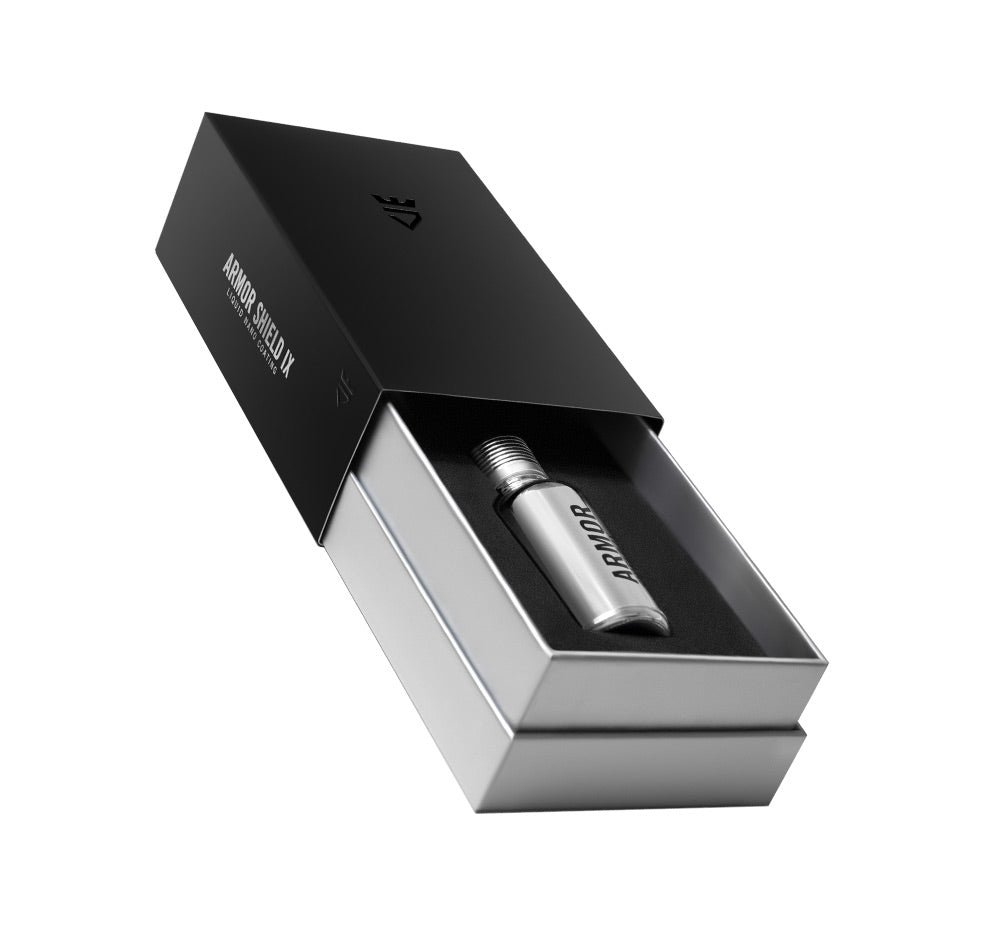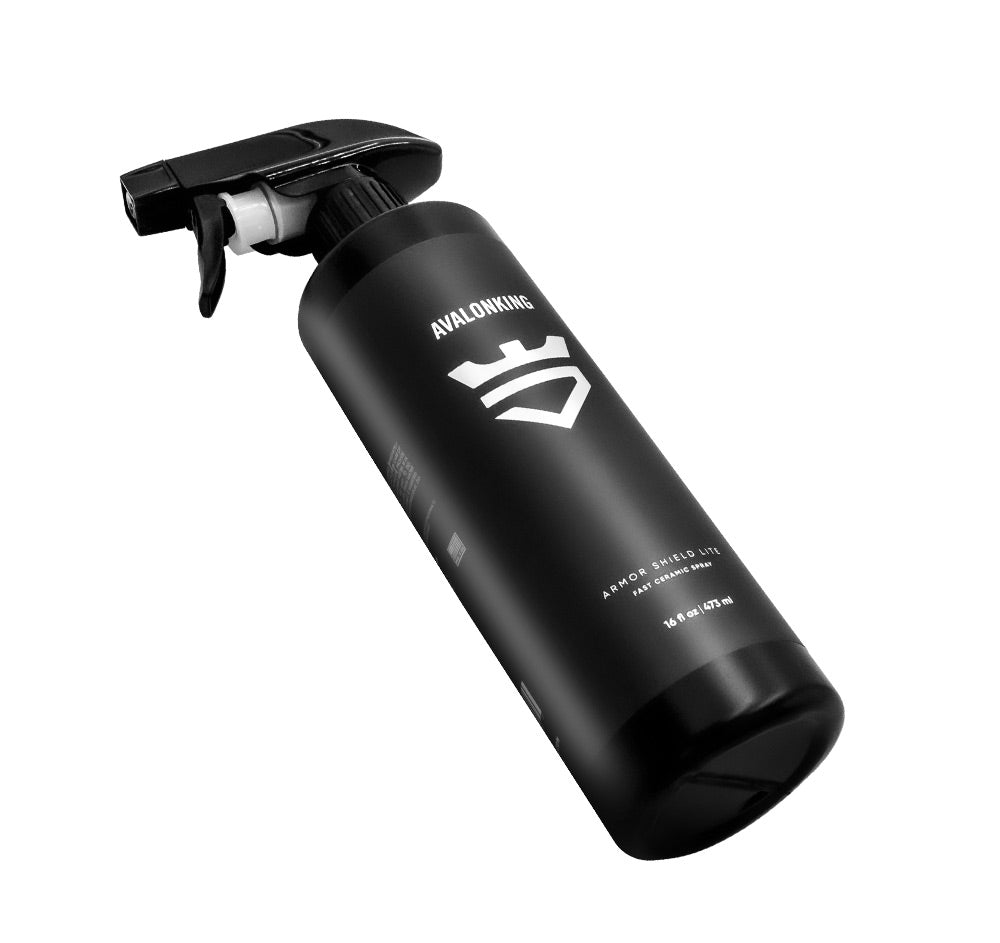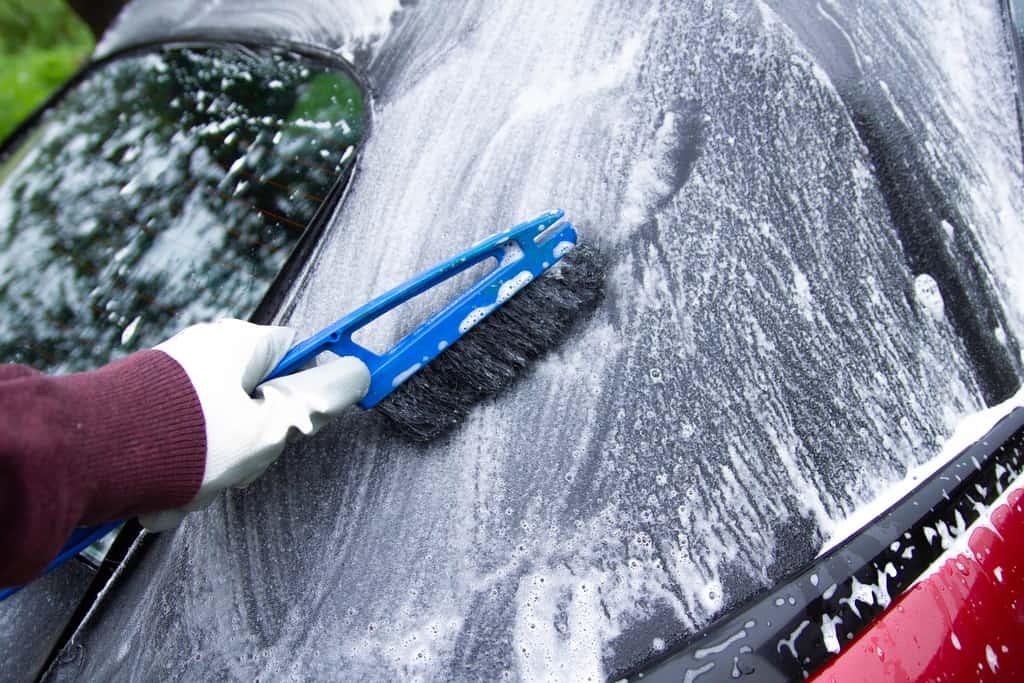Not the type to keep up with your vehicle’s recommended routine maintenance, eh? Well perhaps a few horrifying facts, paired with a splash of suggestions, and topped with a generous serving of statistics will wet your appetite for maintaining your automotive fluids.
The act of refilling, flushing, and replacing automotive fluids can vary greatly depending upon the vehicle in question, driving style, environments encountered, previous maintenance records, and a seemingly endless array of other contributing factors. And despite their “beginner-level” technician status, fluid exchanges are a far cry from quick WD-40 fixes and checking tire pressure, so if you are unsure about your DIY skills, it might be best to leave these tasks to the pros.
As for timing flushing an draining these automotive liquids, it’s always best to err on the side of caution, and turn toward the manufacturer’s recommended fluid change intervals. Hell, these were the people who designed, engineered, and assembled your automobile in the first place, so keep that in mind as you read on.
Engine Oil

When a combustion engine is in operation, both heat and friction are in a constant state of flux, constant reminders of the controlled explosions occurring within. Engine oil not only lubricates these internal components, and acts as a barrier between metals, but it also doubles as a means of dissipating heat. However, the hotter an engine oil becomes, the closer it gets to reaching its smoke point, which is when all manner of combusted nastiness occurs.
Much like almost every other fluid in an automobile, engine oil tends to break down over time, and in turn, the detergents and additives infused within it starts to lose its potency. This is when seals begin to leak, and as the viscosity of the oil begins to thicken due to age, microscopic shards of metal from gears, bearings, springs, valves, and virtually every other moving mechanical component within the motor are released into the liquid.
This vicious cycle not only further thickens the oil, making it all the more difficult for it to do its assigned job, but it creates build-up in areas that are damn near impossible to clean. This is why motor oil changes should occur every 5,000 miles for synthetic blends and 10,000 miles for a full synthetic, whereas conventional oils should be drained and replaced every 3,000 miles.
Coolant

Coolant, or antifreeze, is the moderator for optimal engine temperatures. This liquid pulls double-duty in your automobile, as both a warm water bottle in winter, and a refreshing rainshower in summer, as it continuously strives to control the temp fluctuations within the engine. This makes it all the more crucial to routinely check your engine coolant’s pH balance, and then drain and replace it if it seems off, for old antifreeze has the potential to cause all manner of malady to manifest if left unattended for too long.
The risk here is that coolant not only eventually loses its potency, but it also runs the risk of evaporating. This is why checking, and flushing your coolant fluid should remain on your maintenance checklist, because even if there’s liquid in the overfill tank reservoir, that doesn’t mean there isn’t a shit-ton of sediment resting on the bottom of your radiator.
So check your automaker’s website, or consult the local dealership, because different vehicles have varying coolant servicing routines. Just note that quite a few vehicles require coolant changes every 15,000-20,000 miles, so be sure to consult the pros or dig into that owner’s manual to avoid any unpleasant overheating surprises.
Brake Fluid
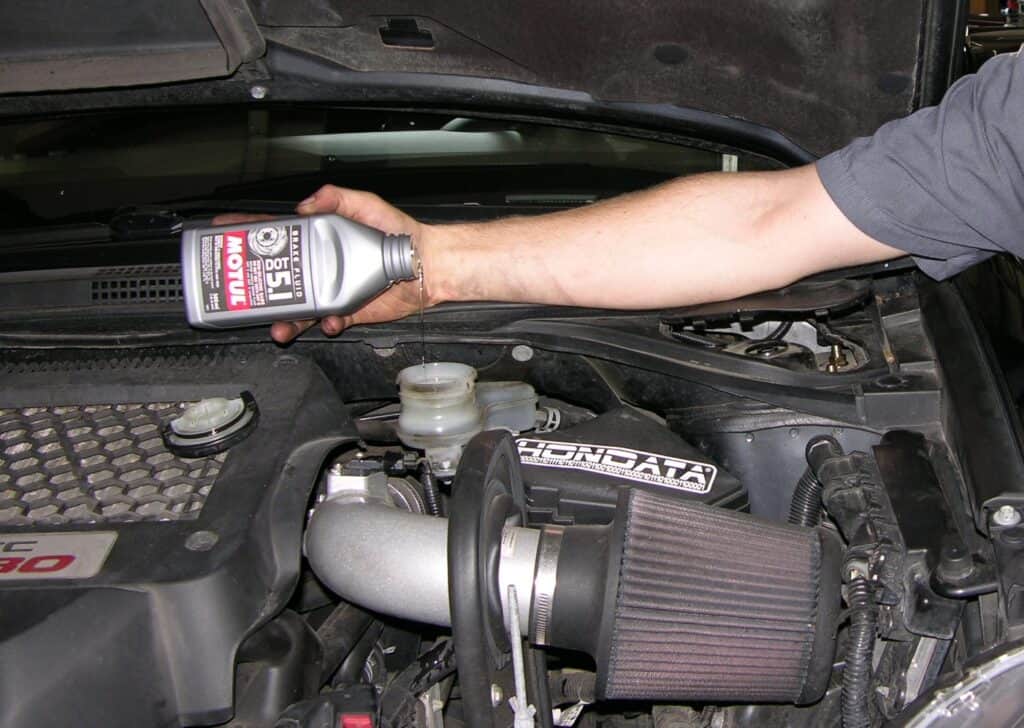
A car’s brakes can cause the fluid within the lines that pressurize them to boil, which is why all brake fluid contains chemicals specifically engineered to absorb and repel moisture. Water not only boils at an incredibly low temperature, but it is also corrosive as all hell when exposed to the right elements.
So if the fluid in your brake reservoir is looking a hair on the dark side, it’s probably time to flush that shit out and put in some fresh juice. Most mechanics will suggest draining and replacing your brake fluid every two years, but that all depends upon any number of the aforementioned factors.
If you are unsure as to whether or not your brake fluid is in good condition, pick-up some brake fluid test strips online or at your local auto parts store. Any reading exceeding 200 ppm means that it’s time for a flush and replacement. Just note that various automotive manufacturers have their own specific procedures for brake fluid flushes, so don’t assume that this task is going to be as straightforward as an oil change.
Power Steering Fluid

This is a fluid that no one ever considers replacing, all the way up until contaminants cause their power steering pump to barf everywhere. To keep that pump and your rack-and-pinion functioning properly, maintain a 3-year/30,000 mile power steering fluid replacement routine.
Just be sure to reference your owner’s manual before doing so, because different manufacturers require varying flush intervals and fluid types. Oh, and let’s not forget the fact that most newer vehicles rely upon electric power steering systems, so perhaps it is best to start by checking to see if you even need power steering fluid in the first place.
Transmission Fluid

Transmission fluid is the mechanical equivalent of the lube people rub on their naughty bits before getting kinky between the sheets. Part friction reducer, part soothing salve, it’s the stuff that guarantees that your gears don’t grind, and that vigorous transmission shifts remain as painless as possible.
Sexual innuendo aside, it’s worth noting that automatic transmissions typically require more frequent fluid changes due to their mechanical complexity. In contrast, manual gearboxes are far less intricate, and therefore can go for prolonged periods of time without the need for a transfusion. While you won’t need to make a transmission fluid exchange a part of your annual fall car care routine, it still should be done every few years, especially on older automobiles.
“When in doubt, service the
-The Drivetransmission with OEM fluid and filter starting at 60k, and every 30k afterwards.”
Like coolant, or antifreeze, transmission fluid contains additives that are crucial to the lubrication of core internal components. When these additives lose their potency, overheating may become an issue due to excessive internal friction, and with time various seals may begin to leak due to the absence of active detergents within the transmission fluid.
While more and more automakers are moving toward “sealed automatic transmissions” that either rarely or never require fluid changes, many vehicles on the road still require the occasional flush. When it comes to replacing automatic transmission fluid in automobiles, a good rule of wrench is to have this transfusion conducted every 24,000 to 36,000 miles, or every 2 to 3 years. If you are unsure as to whether or not it is best to wait or replace your transmission fluid, reach out to your local dealership for a recommendation, because you might be wasting your money by doing so prematurely.
Quick Nerd Note: While many manual transmissions can utilize the same fluid as automatics, certain gearboxes require the use of gear oil, so always check your owner’s manual or look-up what is recommended on the automaker’s website before committing.
The Great High-Mileage Transmission Fluid Replacement Debate
Some mechanics believe that high-mileage vehicles should never undergo a transmission fluid replacement, especially when the automobile is shifting and reversing smoothly. The thought process here is that on high-mileage vehicles, transmission seals get coated with build-up, which may keep them from leaking. Flush this gunk away and replace it with some deposit scouring chemicals, and suddenly leaks will begin to materialize.
While this viewpoint does have some logical merit to it, there is no substitute for routine fluid replacement. This is especially true when the transmission lubricant in question is a high-mileage product with added detergents specifically designed for prolonging gasket and seal longevity.
Signs of a Transmission in Trouble
Automatic Gearboxes- Sluggish shifts, grinding, hesitation under throttle or slipping, strange noises while in reverse.
Manual Gearboxes- Grinding or clunking noises, excessive vibration, and an inability to easily “grab” gears.
A quick look at the liquid on the transmission’s dipstick can tell you a lot about the health of the gearbox too. Automatic transmission fluid should be a translucent, reddish color, while manual transmission fluid can be red, dark green, black, or even translucent. Discolored fluid with a burnt aroma is always a warning sign that something is horribly awry inside, as is a low reading on the dipstick itself.
Quick Nerd Note: Your transmission requires a certain type of fluid to function properly. Various types of transmission fluid have varying levels of viscosity and different transmissions use specific additives. Using the wrong fluid can result in your transmission not getting the proper amount of lubrication or cooling that it requires.
Differential Fluid
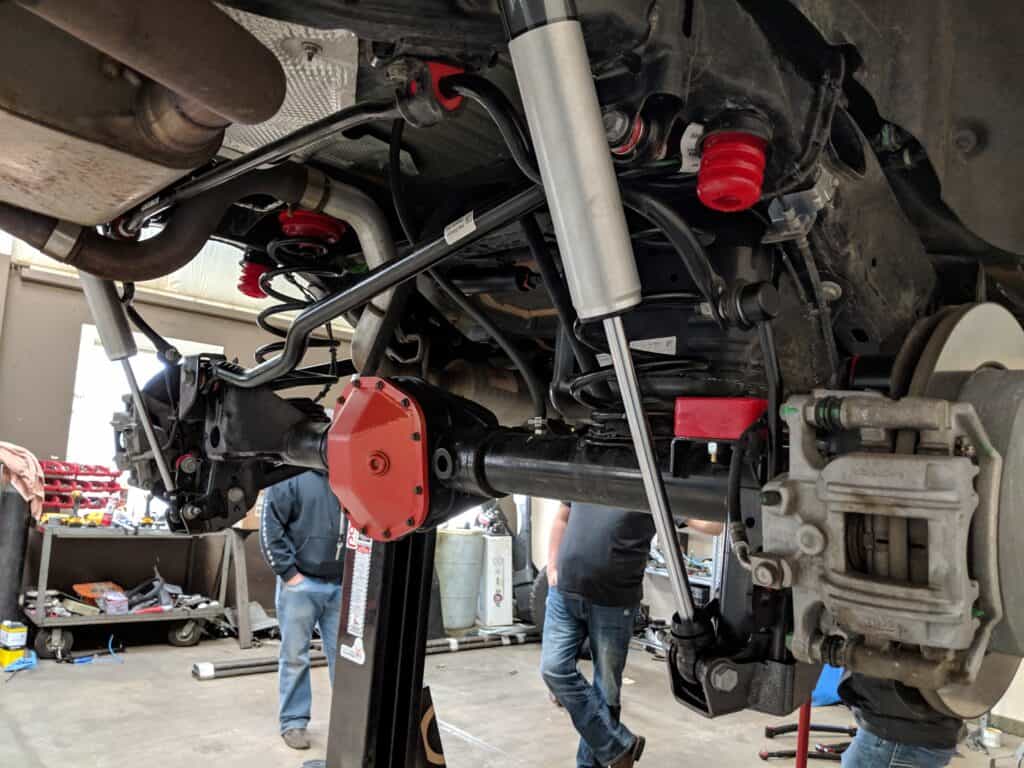
Differential fluid replacement typically depends upon what sort of abuse the vehicle sees on a regular basis. A daily driven, rear-wheel-drive sports coupe is only going to need a differential fluid replacement every 60,000 miles or so when a synthetic product is put into play. But if you’ve got a race car that sees regular track abuse, a heavily armored 4×4 that loves mud, or a rig that is used to tow heavy loads, chances are you’re going to want to change that diff fluid much more often.
Fuel

Injectors, and various other sensitive fuel-related components can really struggle if deposits or “varnish” are allowed to form on their surfaces. Take “heat soak” for instance. This phenomena begins when your drive ends, and fuel is allowed to settle on the injector’s surfaces. But just because the ignition is off, doesn’t mean that the engine isn’t still hotter than an unhinged Hades. But without a concentrated spark, the fossil fuel merely smolders beneath the blanket of heat, leaving behind a hard coat of varnish and fuel deposits.
The side-effects associated with these deposits includes fouled injectors, corroded fuel lines, clogged filters, and more. All of this translates to things like shitty or unreliable acceleration, piss-poor air-fuel ratios, rough idling, sputtering, crappy fuel efficiency, noxious car cabin odors, and damaged gaskets.
This is why it is important to always use a reliable, “Top Tier” gasoline when possible. Unfamiliar with Top Tier petroleum? We won’t overload you with the details, just note that any of the re-fueling stations listed below offer fuels that exceed the minimum requirements for detergent additives. This has been linked to superior fuel system cleaning with every fill-up, and reduced strain on moving components like the fuel pump and injectors.
Quick Final Tip: According to Consumer Reports, the recently updated list of Top Tier gasoline brands in the US now includes: 76, Aloha Petroleum, Amoco, ARCO, Beacon, BP, Breakaway, Break Time, Cenex, Chevron, CITGO, Conoco, Costco, CountryMark, Diamond Shamrock, Entec, Esso, Express Mart, Exxon, Fast Fuel, HFN, Hele, Holiday, Kwik Star, Irving, Kirkland Signature, Kwik Star, Kwik Trip, Marathon, Metro Petro, MFA, Mobil, Ohana Fuels, Phillips 66, PUMA, QT, Quik Trip, Road Ranger, Shamrock, Shell, Sinclair, Sunoco, SuperAmerica, SuperFuels, Texaco, Valero, Value America, Wow, and Win Win.
Parting Shots

Like routine car cleaning, regular maintenance has the potential to boost a vehicle’s resale value. So keep a close eye on those fluid levels and retain all service records, regardless of how miniscule they may be. If you are the DIY type, and wish to prove that you stayed on top of your routine maintenance game, you can scan the receipts for fluids and filters. It’s a good idea to ask for a note when recycling motor oil at the local auto parts store too, as will give potential buyers a visual timeframe for when you serviced the vehicle.






